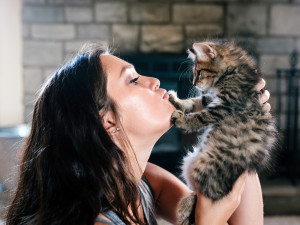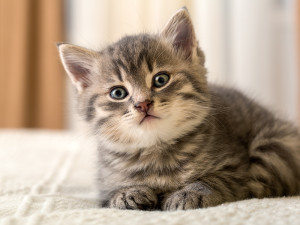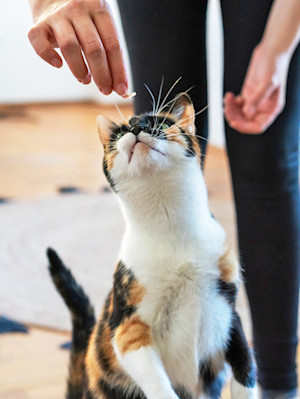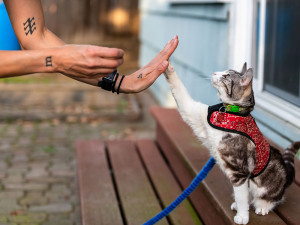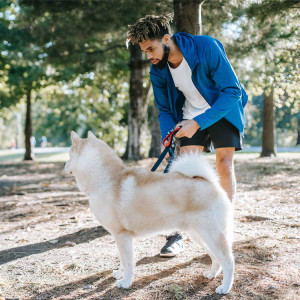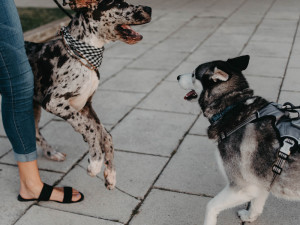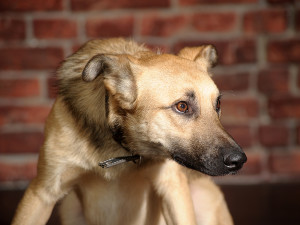No, You Should Not Be ‘Scruffing’ Your Pet
You’ve seen mamas do it to their young, but it’s not something you should try yourself
We can all conjure up an image of a mama cat carrying her kitten in her mouth by the scruff of their neck. Adorable? Yes. Something you should try at home? Absolutely not.
Read on to find out what scruffing is, what it has been used for and whether it’s ever safe for you to ‘scruff’ your dog or your cat.
What is scruffing?
The term ‘scruffing’ can have a few different meanings but it typically refers to firmly holding an animal by the loose skin on the back of the neck, also known as the scruff. Historically, scruffing has been used to restrain an animal when other options aren’t available, particularly if the animal is aggressive or difficult to handle. It can also refer to lifting an animal by the scruff. Scruffing has also been used as a training technique; for example grabbing hold of the scruff to get an animal’s attention when they are ‘misbehaving’. It goes without saying, do not use this ‘technique’ at home.
Scruffing is based on imitating the maternal behaviour of many mammals, who carry their young by the scruff. Pre-weaned kittens, for example, have a reflex that makes them relax when their mother lifts them by the scruff of the neck.
Is scruffing safe?
Many people believe that scruffing is safe and calming, assuming that because mothers carry their young this way, it must be completely pain-free. However, this is a common misconception.
While scruffing, (when done by a professional in an emergency) can be effective for briefly restraining an animal, especially to control their head, it is not a suitable or safe method for training. Scruffing doesn’t provide the welfare benefits that some people might expect, and it can be harmful, both physically and psychologically, to the animal.
Scruffing in cats is never an acceptable method of restraint. It can cause them to become increasingly fearful and panicked, which may escalate into defensive aggression. This not only increases the risk of injury to the handler but also worsens the cat’s behaviour in the long run. There are more effective and humane methods of restraint available (more on this later) that are less likely to cause distress.
For dogs, scruffing can also be intimidating and should be avoided. Historically, some dog trainers used scruffing as an aversive punishment or a way to assert dominance, but this is based on outdated theories. Scruffing can create anxiety and aggression in dogs, making them less inclined to interact positively with their parents. Reward-based techniques are far more effective for building a bond with your dog.
Additionally, the scruff is a sensitive area, and it is rarely suitable for supporting an adult animal’s body weight. While it may not be immediately painful, scruffing can cause discomfort, especially as the animal matures. Mothers stop lifting their young by the scruff once they are weaned, and many adult animals find it painful, frightening or both.
When to scruff a pet (if ever)
There are almost zero situations where scruffing might be appropriate. If an animal is in immediate danger, or posing an immediate threat to a person or another animal, and no other form of restraint is available, scruffing can be used temporarily to regain control of the situation. However, this should only be done as a last resort, for the shortest time possible. Scruffing may even cause the animal to become more aggressive, so it’s important to be prepared for this possibility.
You might have heard that smaller dogs can sometimes tolerate this method of handling, particularly if it has been used regularly and gently throughout the animal’s life. While there is some truth in this, the use of scruffing should be limited to handlers with experience, medical understanding, and with whom the animal is familiar and again, only in a emergency as a last resort. Should a stranger use this technique it could cause anxiety in the animal. If this method is used to lift a small dog, the animal’s weight should be supported as quickly as possible. Alternative methods of restraint or movement should always be used where possible.
Injections are often given into the scruff of the neck and this does require gentle tenting of the skin. This should be done calmly and slowly, never roughly and always by a professional. If you need to administer injections under the skin yourself you should seek professional guidance to learn the correct technique and ensure it is done calmly and carefully.
Alternatives to scruffing
For dogs, a well-fitting collar and lead – or a harness – should be used to control or move them without the need for scruffing. This provides a safer and more comfortable way of handling your dog.
For cats, scruffing should be avoided entirely. If you need to restrain an aggressive cat, it’s better to wrap them gently in a blanket or towel. This protects both you and the cat, offering effective restraint without inducing unnecessary stress or fear.
When it comes to training, positive reinforcement is the preferred method. This involves rewarding desired behaviours, rather than punishing unwanted behaviours. If you are training your pet, scruffing should never be used as a form of punishment.
Cats can also be trained. Getting them gently accustomed to handling at home, using rewards and patience, for example, opening their mouth, checking their ears, or handling their paws, can make them more comfortable with these tasks if they ever need to be done in a veterinary setting. Gradual desensitisation can reduce stress and make such experiences easier for both of you.
Expert opinions on scruffing
It is widely accepted amongst feline professionals that scruffing should never form part of handling and restraint of cats, as there are many more effective and welfare friendly alternatives exist.
While opinions on scruffing in dogs are less clear-cut, most experts agree that it should never be used as an aversive training method. It is also widely discouraged as a handling technique in favour of more ethical, humane alternatives.
Resources
A Review on Mitigating Fear and Aggression in Dogs and Cats in a Veterinary Settingopens in new tab
Legal Responsibilities Of All Dog Ownersopens in new tab
Position Statement on Scruffing Catsopens in new tab
Cat Friendly Veterinary Interaction Guidelines: Approach and Handling Techniquesopens in new tab


